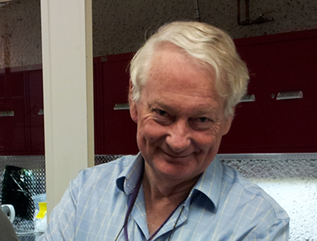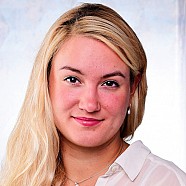Popular Articles
- Earliest molecular events of vision revealed
- Dynamics and Kinetics in Structural Biology
- XFEL Pulses Demonstrate How Plants Perceive Light
- Structural biology is solved -- now what?
- BioXFEL Postdoctoral Fellowship Award
Archived Articles
News
- Details
- Tuesday, 13 July 2021

John Spence, the Scientific Director of BioXFEL, died peacefully Monday morning, June 28, in Boston. John was BioXFEL, he was a visionary in building the team and establishing the resulting community. He strongly impacted all faces of BioXFEL.
- Details
- Thursday, 01 July 2021

Sabine Botha is a Postdoctoral Research Scholar in the group of Prof. John Spence at Arizona State University. She completed her undergraduate education and masters program at the University of Oxford (UK) in Engineering Science, specializing in Biomedical and Information Engineering.
- Details
- Thursday, 06 May 2021

We are all very proud of our BioXFEL Scholar, Tek Narsigh Malla and our BioXFEL interns and UPR undergraduates Gabriela Díaz Figueroa and Ana Sofía Santiago-Russe for making it into the Semi-final round of the Reach Out Science Slam Competition. They gave wonderful presentations and did an excellent job representing the BioXFEL Center.
- Details
- Thursday, 08 April 2021

The NSF BioXFEL Science and Technology Center has funding intended to support research at US institutions. This support is for the application of X-ray free electron lasers to structural biology in collaboration with the BioXFEL STC.
- Details
- Friday, 26 March 2021

This Special Issue, “Novel Structural Studies of Coronavirus Proteins”, will gather both research and review articles from experts in the field with the ultimate goal of creating an international platform that provides with rich and reference information on the latest advances and exciting discoveries in the field of X-ray crystallography.
- Details
- Thursday, 25 March 2021

Phytochromes are the molecular eyes of plants and bacteria that regulate cellular response to light, an essential environmental signal. Upon light absorption, the phytochromes change their structures substantially from a conformation that absorbs in the red-light called Pr to another conformation that absorbs in the far-red light called Pfr, respectively.
More Articles...
- BioXFEL scientists make a molecular movie of a biological process to convert sunlight to chemical energy
- ASU professor awarded top research prize
- Lattman, Liu, Morrow and Ruhl elected AAAS fellows
- European XFEL Virtual User Information Meeting - 7th Call for Proposals
- 2021 Panofsky Fellowship Call for Applications





